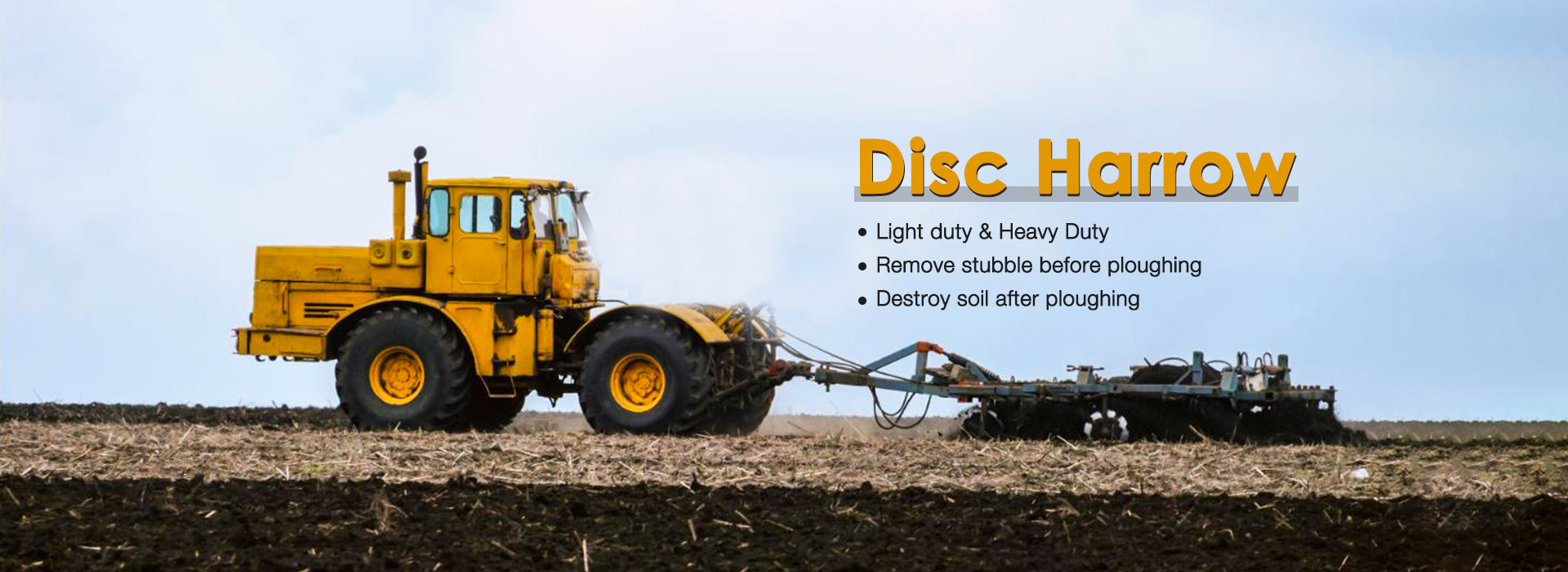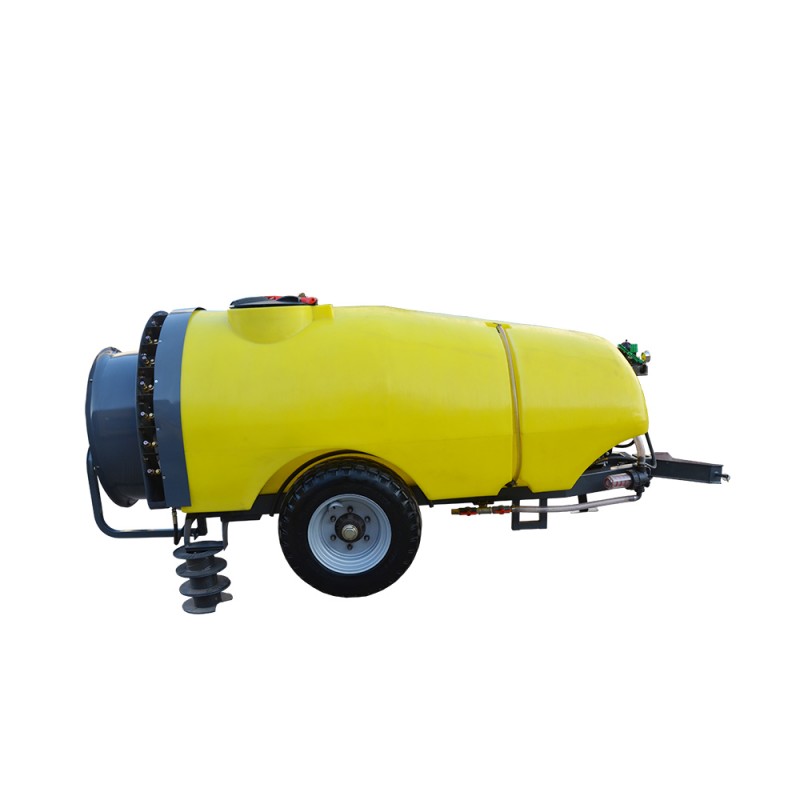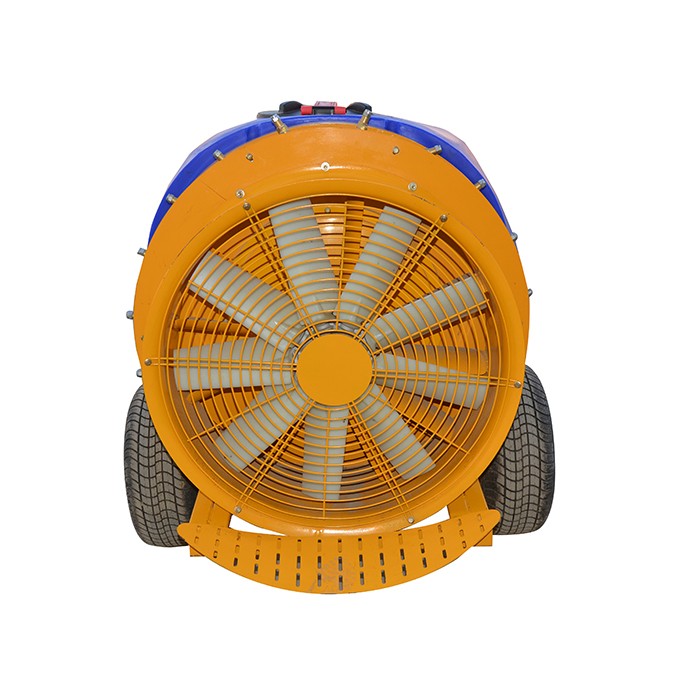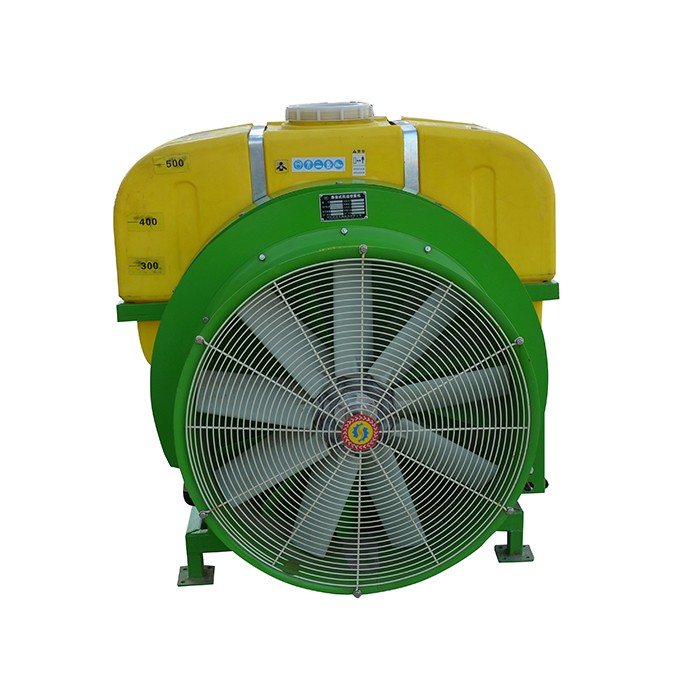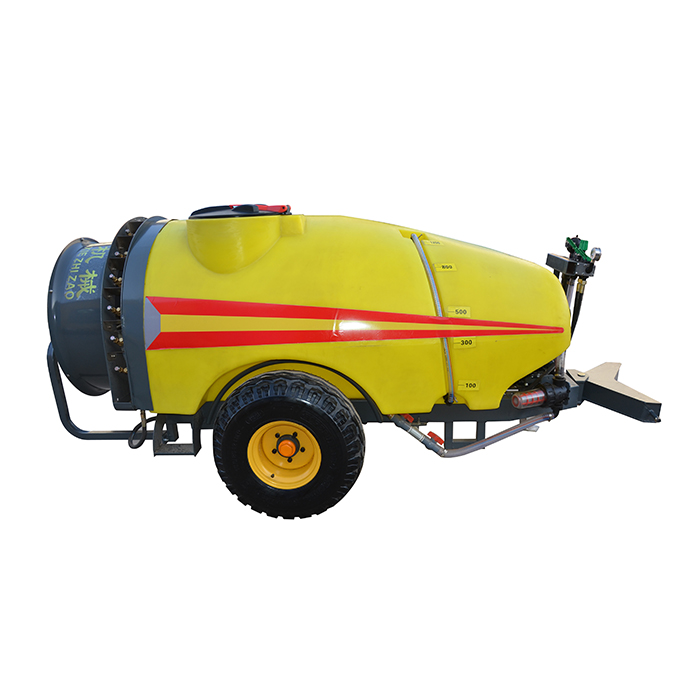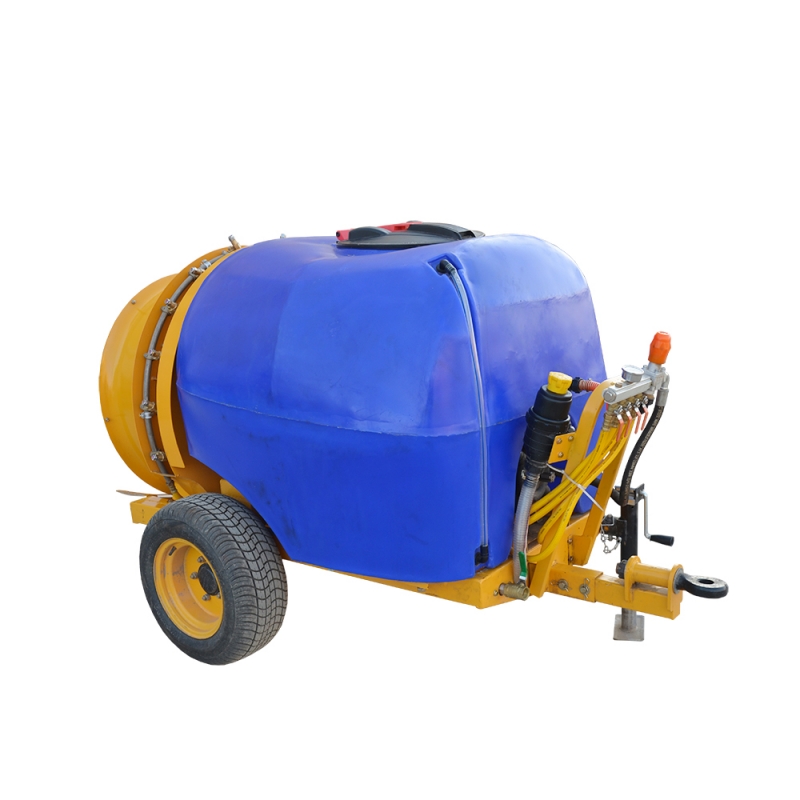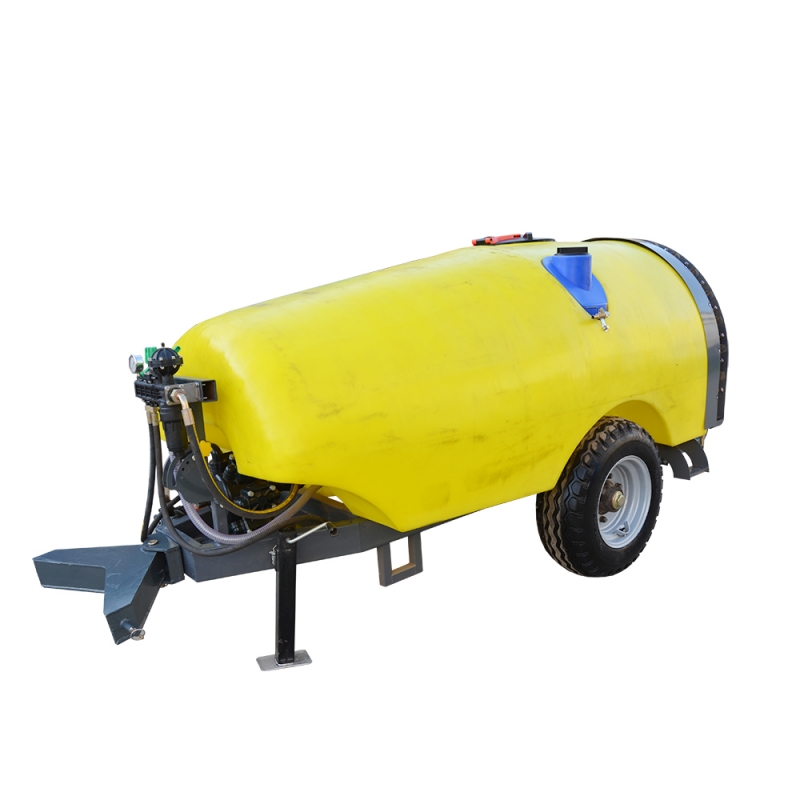Trailed Air Blast Sprayer
A trailed air blast sprayer, also known as an airblast sprayer or air-assisted sprayer, is a sophisticated agricultural implement designed for efficient and precise application of pesticides, fungicides, and other crop protection products. This innovative machinery utilizes a powerful fan to generate a high-velocity air stream that carries and disperses spray droplets onto target crops. Trailed air blast sprayer is particularly effective for treating orchards, vineyards, and other high-value perennial crops with dense canopies. By combining liquid spray with forceful air movement, this sprayer ensure superior coverage and penetration of chemicals into hard-to-reach areas of plants, significantly enhancing the efficacy of crop protection efforts while minimizing chemical waste and environmental impact. The versatility and efficiency of trailed air blast sprayer has made them an indispensable tool in modern agriculture, revolutionizing pest and disease management practices across various crop production systems.
Send Inquiry
Trailed air blast sprayer comprise several essential components that work in harmony to deliver optimal spray coverage. The main tank holds the spray mixture, while a powerful pump system pressurizes and delivers the liquid to the nozzles. The heart of the sprayer is the high-capacity fan, typically powered by the tractor's power take-off (PTO) shaft. This fan generates a strong airstream that carries the spray droplets. Adjustable nozzles are strategically positioned around the fan housing to release the spray into the airstream. Many modern trailed air blast sprayer also feature advanced control systems that allow operators to fine-tune application rates and spray patterns.

The operating principle of a trailed air blast sprayer is based on the concept of air-assisted spray application. As the sprayer moves through the orchard or vineyard, the fan creates a turbulent air current that envelops the crop. Simultaneously, the pressurized spray mixture is released through the nozzles and atomized into fine droplets. The high-velocity airstream then carries these droplets, propelling them into the plant canopy. This forceful air movement helps to penetrate dense foliage, flip leaves, and ensure comprehensive coverage on both upper and lower leaf surfaces, as well as fruits and branches.
3)Spray Pattern and Coverage
One of the key advantages of trailed air blast sprayer is their ability to create a three-dimensional spray pattern. The combination of horizontal and vertical air movement allows for thorough coverage of tall trees and vines. Operators can adjust the direction and intensity of the airflow to match the specific crop architecture and growth stage. This flexibility enables precise targeting of spray application, reducing drift and improving overall efficacy. The result is a more uniform distribution of crop protection products throughout the plant canopy, leading to better pest and disease control.
Trailed air blast sprayer offer significant efficiency gains compared to traditional spraying methods. The wide spray swath and ability to treat multiple rows simultaneously greatly reduce the time required for application. This increased efficiency is particularly valuable during critical periods when timely intervention is crucial for crop protection. Farmers can cover larger areas in less time, allowing for more precise timing of treatments and potentially reducing the number of applications needed throughout the growing season. The time savings translate directly into reduced labor costs and improved overall farm productivity.
2)Reduced Chemical Usage
By improving spray coverage and penetration, trailed air blast sprayer can often achieve better pest and disease control with lower chemical application rates. The efficient delivery system ensures that more of the applied product reaches its intended target, reducing waste and environmental impact. This precision application not only helps to minimize chemical costs but also aligns with sustainable agriculture practices and integrated pest management strategies. Many growers report significant reductions in pesticide use after adopting trailed air blast sprayer technology, contributing to both economic and environmental benefits.
3)Versatility Across Crops
While trailed air blast sprayer is most commonly associated with tree fruit and vine crops, their versatility extends to a wide range of agricultural applications. This sprayer is effectively used in nut orchards, citrus groves, berry farms, and even in some row crop situations. The adaptability of trailed air blast sprayer to different crop types and growth stages makes them a valuable investment for diversified farming operations. With adjustable nozzle configurations and air flow settings, a single trailed air blast sprayer can be optimized for use across multiple crops throughout the growing season, maximizing the return on investment for farmers.
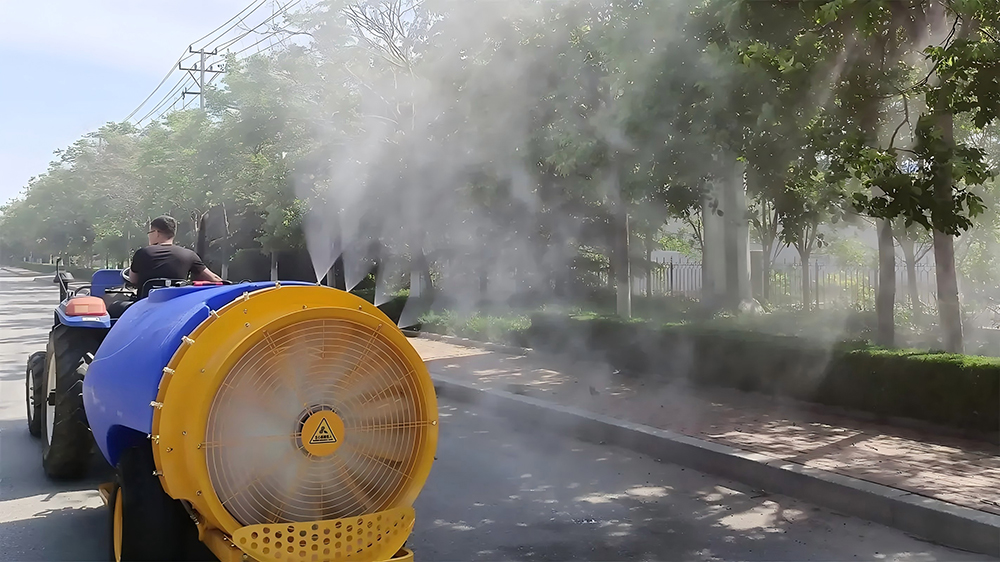
As environmental concerns continue to shape agricultural practices, trailed air blast sprayer manufacturers are focusing on eco-friendly innovations. Developments in nozzle technology aim to produce more uniform droplet sizes, reducing drift potential while maintaining effective coverage. Some new designs incorporate air-induction nozzles that create larger, air-filled droplets that are less prone to drift but still provide excellent plant coverage. Additionally, recycling sprayer systems are gaining traction, particularly in vineyard applications. These systems capture and reuse spray that doesn't adhere to the plant, significantly reducing chemical waste and environmental impact. As regulations around pesticide use become more stringent, these environmentally conscious features are likely to become standard in future trailed air blast sprayer designs.
2. Doruchowski, G., & Holownicki, R. (2000). Environmentally friendly spray techniques for tree crops. Crop Protection, 19(8-10), 617-622.
3. Fox, R. D., Derksen, R. C., Zhu, H., Brazee, R. D., & Svensson, S. A. (2008). A history of air-blast sprayer development and future prospects. Transactions of the ASABE, 51(2), 405-410.
4. Garcerá, C., Román, C., Moltó, E., Abad, R., Insa, J. A., Torrent, X., ... & Chueca, P. (2017). Comparison between standard and drift reducing nozzles for pesticide application in citrus: Part II. Effects on canopy spray distribution, control efficacy of Aonidiella aurantii (Maskell), beneficial parasitoids and pesticide residues on fruit. Crop Protection, 94, 83-96.
5. Salcedo, R., Vallet, A., Granell, R., Garcerá, C., Moltó, E., & Chueca, P. (2020). Eulerian–Lagrangian model of the behaviour of droplets produced by an air-assisted sprayer in a citrus orchard. Biosystems Engineering, 198, 36-48. 6. Triloff, P., Knoll, M., Lind, K., Gebauer, S., & Raifer, B. (2012). Low-loss-spray-application—The scientific basis. Julius-Kühn-Archiv, 439, 142-149.

